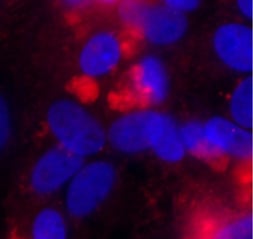Originally published : Mon, February 20, 2017 @ 4:56 PM
Updated : Mon, March 6, 2017 @ 4:37 PM
New research has, for the first time, found evidence suggesting the molecular epidemiology of how the Zika virus spreads from a human mother to her fetus. The authors hope that their results will enable advancements in therapy and prevention of the current Zika pandemic that can cause serious congenital birth defects.
As of February 8, 2017, the US Centre for Disease Control and Prevention (CDC) has seen 5001 cases of Zika virus reported in the US States and DC, and a further 36,638 cases reported from US Territories since monitoring of the Zika outbreak started in January 2015.
The single-strand RNA arbovirus is spread by the Aedes aegypti and Ae. albopictus mosquitoes and is associated with mild or asymptomatic dengue-like disease symptoms, along with a dramatic, 20-fold increase in fetal microcephaly and brain and ocular malformations if the mother is infected while pregnant.
The source and mode of vertical transmission from mother to fetus has been presumed to be via the maternal-placental-fetal connection that enables the exchange of nutrients and waste, alongside production of hormones and extracellular vesicles. However, a link that explains the interval delay between maternal symptoms and the fetal malformations following infection has thus far remained unclear.
This latest study, led by Kjersti Aagaard of the Baylor College of Medicine and Texas Children’s Hospital, has progressed our understanding of the mechanism of transmission between mother and fetus.
The research team used a variety of genomic analysis techniques including RT-PCR and Stellaris® RNA-FISH to show that primary human placental trophoblasts from non-exposed donors can be infected by primary passage of a Zika-virus FLR (ZIKV-FLR) isolate and that these cells support Zika virus RNA replication.
 Stellaris RNA FISH-labeled Zika virus is displayed in figure 4 of this publication. In short, human vero cells underwent either a mock or actual infection with Zika-FLR strain. Following infection, the cells were probed with custom Stellaris probe sets, professionally designed by our design team and now available as DesignReady products to specifically label Zika viral RNA. Results demonstrate the positive strand of ZIKAV exclusively in the infected cells and not in the cells having undergone mock infection. The image shown to the right is an example of Stellaris RNA FISH-labeled Zika virus in an infected vero cell culture by these same authors.
Stellaris RNA FISH-labeled Zika virus is displayed in figure 4 of this publication. In short, human vero cells underwent either a mock or actual infection with Zika-FLR strain. Following infection, the cells were probed with custom Stellaris probe sets, professionally designed by our design team and now available as DesignReady products to specifically label Zika viral RNA. Results demonstrate the positive strand of ZIKAV exclusively in the infected cells and not in the cells having undergone mock infection. The image shown to the right is an example of Stellaris RNA FISH-labeled Zika virus in an infected vero cell culture by these same authors.
The findings suggest that the ZIKV-FLR strain can replicate in human placental trophoblasts without host cell destruction, thereby suggesting that these cells are likely serving as a permissive reservoir and portal for fetal transmission with risk of latent microcephaly and malformations.
While the authors note there are limitations to their study, they hope the research will provide avenues and direction for other investigations around the world and enable advancements in therapy and prevention of congenital birth defects caused by the Zika virus.

